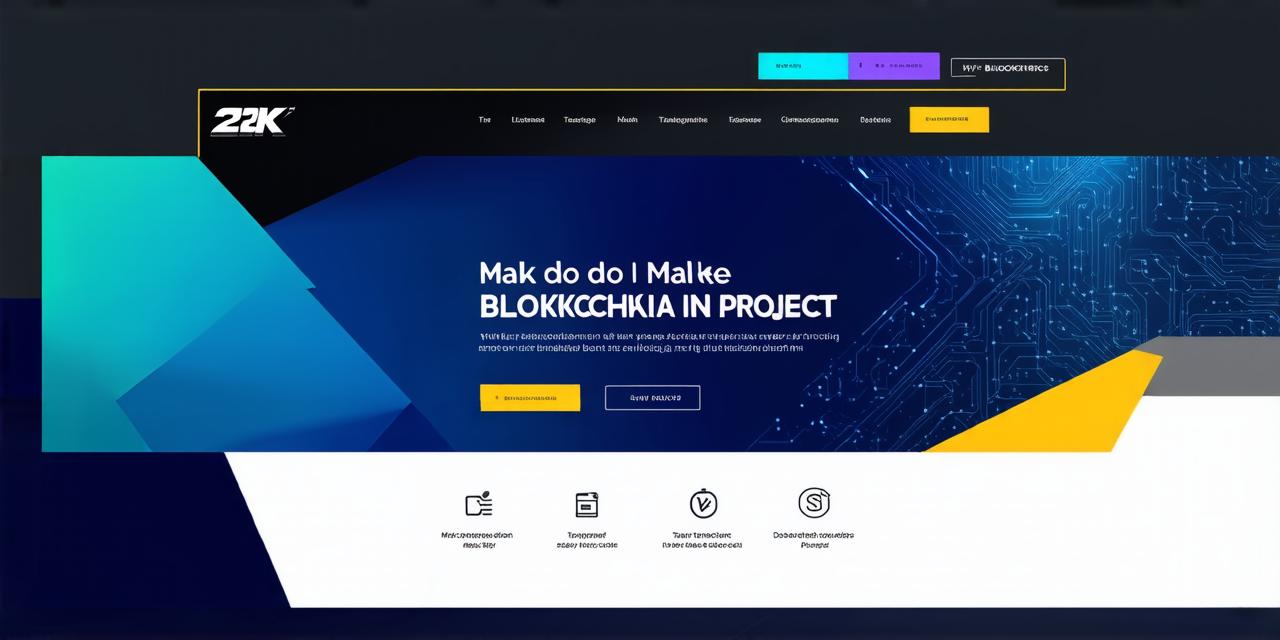Introduction:
Blockchain technology is rapidly gaining popularity among developers and businesses alike due to its potential to increase transparency, security, and efficiency.
1. Define the Problem:
The first step in building a blockchain project is to identify the problem that needs to be solved. This can be anything from supply chain management to voting systems or even digital identity verification. By defining the problem, you can determine which type of blockchain technology will be most suitable for your project.
2. Choose the Right Blockchain Technology:
Once you have defined the problem, it’s time to choose the right blockchain technology for your project. There are several types of blockchains, including public, private, and consortium blockchains. Each type has its own strengths and weaknesses, so it’s essential to choose the one that best suits your needs.
3. Develop a Proof of Concept:
After choosing the right blockchain technology, the next step is to develop a proof of concept (PoC) for your project. This is a small-scale version of your project that demonstrates its functionality and potential. A PoC can help you identify any technical issues or challenges before investing too much time and resources into your project.
4. Create a Project Plan:
Once you have developed a proof of concept, it’s time to create a project plan for your blockchain project. This should include timelines, milestones, budget, and resource allocation. It’s also essential to involve all stakeholders in the planning process to ensure everyone is on the same page and understands their roles and responsibilities.
5. Build the Blockchain:
With a project plan in place, it’s time to start building your blockchain project. This involves writing smart contracts, developing decentralized applications (dApps), and integrating with other systems like databases and APIs. It’s essential to follow best practices like version control, code reviews, and testing to ensure your code is secure and reliable.

6. Launch the Blockchain:
After building the blockchain, it’s time to launch it and make it available to users. This involves setting up infrastructure like servers, domains, and payment gateways. It’s also essential to have a marketing strategy in place to attract users and build a community around your project.
7. Monitor and Maintain the Blockchain:
Once the blockchain is launched, it’s important to monitor its performance and maintain it regularly. This involves fixing bugs, adding new features, and updating security protocols. It’s also essential to have a plan in place for handling user disputes or other issues that may arise.
8. Real-Life Examples:
To illustrate these steps, let’s look at some real-life examples of successful blockchain projects. One example is the Ethereum network, which was launched in 2015 and has since become the largest decentralized platform for building dApps.
9. Expert Advice:
To build a successful blockchain project, it’s essential to involve experts in the field, including developers, security experts, and legal advisors. It’s also important to stay up-to-date with the latest trends and developments in blockchain technology. Finally, it’s crucial to have a clear vision for your project and a willingness to adapt and evolve as needed.
Summary:
Building a successful blockchain project requires careful planning, technical expertise, and a strong sense of community. By following these steps and taking heed of expert advice, you can create a blockchain solution that solves real-world problems and delivers value to users. Remember, the key to success is to stay focused on your problem, choose the right technology, and never stop learning and improving.
